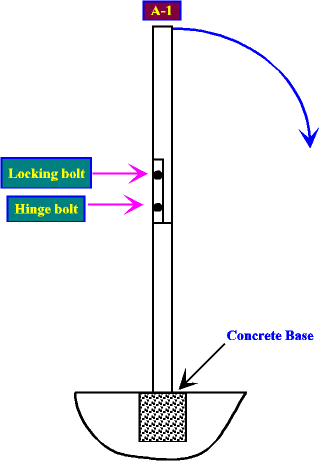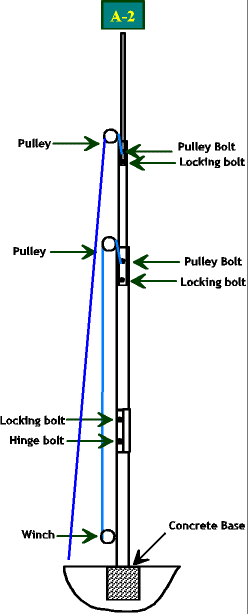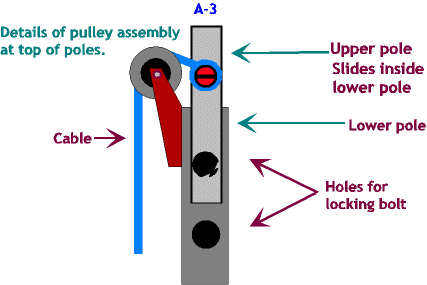Mast Idea from 'Down Under'

The following description and graphics by antenneX is based on how we interpreted from the information we received from Dennis in text form and we hope we have done his idea justice in this article.
Figure 1 is the diagram of the base and shows the hinge bolt and locking bolt. This section is built so that it will allow the upper masts to be folded over for installation of the desired antenna on the top mast. In order to do this, you will need a gin pole to raise and lower the masts.

Figure 2 is the overall diagram of the mast and shows the entire mast. Each section of the mast has a separate cable to pull that section up into position, where a bolt is then inserted into a hole drilled through both pipe sections to lock the sections in position. By using separate cables, the overall complexity of this design is lowered and the chance of cable entanglement is lowered. After each section is raised, the cable for that section is coiled up and secured. Then the next section is raised and secured in the same manner.
Eyes for guy wires can be welded at the top of each section for added stability. Either 3 or 4 eyes can be used. There are several types of clamps available, in some parts of the world, that already have the guy wire eyes on them. These clamps can be installed below the pulleys so the guy wires will not become entangled with the hoisting cable. In areas of high wind and/or bad weather, such as icing conditions in the winter, this would be necessary. The guy wires do not have to be removed or loosened as the mast is raised and lowered because the guy wires will follow the masts up and down. Just take precautions to keep them from tangling with the other wires as the masts are raised and lowered.
Figure 3 is an illustration of the top section of the pipe with the pulley and cable and cable fastening bolt in place. The cable bolt can be welded in place. Just be sure the smaller pipe will fit inside the larger pipe with the bolt welded in place and the cable fastened to the bolt. It must slide up and down inside the larger pipe without binding or seizing up in any way, as it is raised and lowered.

Dennis says he is now searching for a set of plans to build a rotator.
Originally posted on the AntennaX Online Magazine by Dennis Scard
Last Updated : 24th April 2024
